Top Strategies to grow your Medical Billing Business

It’s a great time to be in the revenue cycle business.
The last few years have been overwhelming for healthcare providers and medical billing companies. Loss of market share to giant aggregators, the advent of cloud-based revenue cycle software, big stride forward in automation as well as AI in medical billing, the shift to value-based care, and most importantly, the rising consumerism with patients becoming one of the biggest payers. While it is essential to embrace these changes, medical billing companies can no longer stick to their most significant value proposition that is localized and personalized services and need to embrace technology and seek new revenue models.
The opportunities in the medical billing space are tremendous, so are the challenges – with headwinds coming from falling reimbursements and the rise of national-level aggregators. While the times are tough, there are opportunities aplenty.
1. Market size and top technology trends
By 2021, the medical billing outsourcing market is expected to reach $16.9 billion. The multi-billion-dollar consolidation deals in 2018 and 2019 point to the entry of larger names such as Berkshire Hathway, Amazon, JP Morgan Chase, Athenahealth acquisition, CVS, and even Google and Microsoft in the healthcare software and services business. On the other side, many of the more significant players are adopting offshore strategy either directly by setting up captive centers or through their partners. More healthcare providers are choosing to outsource as their ability to navigate the changing healthcare reimbursement regulations, ability to hire competent staff, and compliance risks are limited besides costs and operational factors.
Strategies for Success
Medical Billing Services Providers need to invest in creating scale and differentiation with new technologies such as RPA/AI/ML.
2. Healthcare providers are consolidating
With rising consumerism, physician practices are increasingly merging into larger brands – physician groups, hospitals, and health systems. This gives them the ability to offer comprehensive medical services while gaining the scale to negotiate better with health plans. As this consolidation happens, we must note that the outsourcing model of the larger entities is very different from the traditional physician practice revenue cycle model.
Strategies for Success
Medical Billing Companies should relook at their internal talent pool, invest in high caliber resources, and technologies that do not require high upfront investments.
3. Manage cost and reduce revenue leakage
Rising consumerism, increased regulatory compliance, and reducing reimbursements are forcing healthcare leaders to look at innovative strategies to contain costs.
Strategies for Success
It’s not enough to provide a collections service. Medical Billing Companies should acquire the capabilities to identify and systematically address revenue leakage as well. Utilizing KPIs and Benchmarks to create a good ecosystem of performance measures is also essential.
4. Embracing Automation in Medical Billing
Medical billing processes can be and are being significantly automated at a rapid pace. New generation robotic process automation technologies coupled with artificial intelligence, hold a lot of promise.
Strategies for Success
Focus on the Patient. While automation can take away manual work, it really cannot replace the value of direct interaction with patients. Softwares do not show the empathy that human interactions display. Patients need support from registration through payment, and today, they are one of the largest payers of the medical bill, the biggest opportunity is creating a patient-focused revenue cycle.
5. Overcoming Growth Hurdles
Cloud-based RCM software and service providers emerged as the fast-growing companies in the revenue cycle space. Greenway, Kareo, Athenahealth, etc. are some of the names that have become synonymous with medical billing. While there can be no doubt about the continued value proposition of localized physician-specific services that medical billing companies can offer, the change brought in by larger aggregators has put their businesses at risk.
Strategies for Success
As regional billing service providers face growth hurdles with national level aggregators providing significant competition, there should not be any doubt that physicians still value the personal touch and focused services provided by regional billing companies. We recommend a four-pronged strategy:
Enhance value proposition through analytics and personalized services
Reposition your billing company as you build your new services portfolio
Invest in higher-level resources
Adopt automation but brace up for a new level of platform functionalities
In this white paper, we look at the trends and what medical billing companies need to do to survive and thrive.

